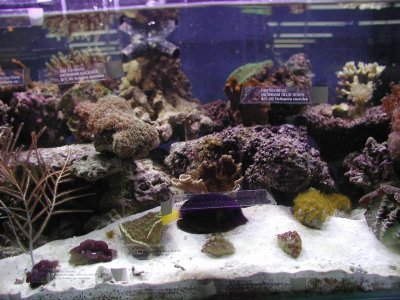alton
Well-known member
By the 2000s, high temp bulbs were quite good. I am speaking more of around the early 1990s when somebody was wanting to do better than hydroponics daylight MH bulbs that only went to 6500K.
What you can learn from those old discussions is that the people who said that the new stuff was not yet good enough were totally right. They are still right today - the sooner that people realize this, the sooner that they will eventually get good enough.
In 2000 in San Antonio there was not a lot of corals to choose from, I attached a picture from one of the top stores at that time. By 2003 corals where in full swing.





